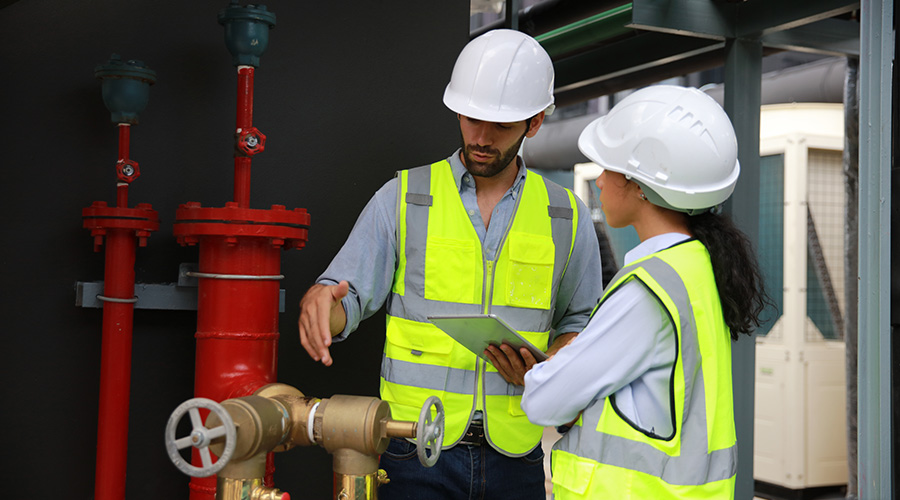
What's New in NFPA 25?
John Denhardt of the American Fire Sprinkler Association discusses the roles and responsibilities outlined in NFPA 25. August 16, 2024
By Jeff Wardon, Jr., Assistant Editor
Fires are hazardous situations for any facility, which is why organizations such as the National Fire Protection Association (NFPA) set standards for property owners to follow, including NFPA 25, which covers water-based fire protection systems. These standards and codes help property owners keep their buildings in top form and prepared for disaster. NFPA 25 was recently updated last year.
To help facility managers navigate the code, John Denhardt, vice president of engineering and technical services at the American Fire Sprinkler Association, will be presenting a session on the standard called “NFPA 25, The Standard of the Inspection, Testing, and Maintenance of Water-Based Fire Protection Systems - Roles and Responsibilities” at NFMT Remix 2024 in Las Vegas from October 29 to 30.
FacilitiesNet: Who are the key stakeholders referenced in NFPA 25, and how does the standard define their roles?
John Denhardt: So NFPA 25 is written just like a car owner's manual, meaning it's written for the owner of the property. Now in a lot of cases, commercial buildings owners might be a corporation or might be a different entity all together. However, it’s still designed for the owners of the property.
Typically, the authority having jurisdiction, which is typically the fire marshal or the insurance company, would have the authority to enforce NFPA 25. The contractors typically are retained by owners to help maintain their properties. I like to call it a three-way role, but the owner is ultimately the only one responsible for their property.
FacilitiesNet: What are the specific responsibilities assigned to each stakeholder group under NFPA 25?
Denhardt: The owner is responsible for everything, so it is just like your owner's manual in your car. The contractor that installs the system, once he turns it over and it's out of its warranty period, there's no requirement for the original installation contractor to do anything.
Just like in your car, you might have a one-year warranty or whatever your warranty is. However, that doesn't mean that the contractor is responsible for changing the oil, for example. So, everything from day one, once the building gets turned over, it becomes the responsibility of the owner.
Where the contractor comes in is only what the owner agrees to sublet or hire for. There's no difference if you take your car in for an oil change. The contractor is there, and the automotive business is a good example of that relationship. The authorities having jurisdiction is involved strictly based on their state or local building code fire code just to ensure that the systems are being maintained.
If you had to broaden that out to the automotive side, that's like the government doing a state inspection to have you make sure your system is good or make sure your emissions are right.
FacilitiesNet: What are the characteristics and duties of an individual inspector as outlined in NFPA 25, and how do they contribute to ensuring compliance with the standard?
Denhardt: NFPA 25 requires that a knowledgeable and trained person does the inspection. Now that could be the owner if the owners got the knowledge and training. Most of the time they don't, so they'll turn around and they'll subcontract that work out to a contractor to perform that work. Again, the contractor is only obligated to do whatever the contract says. So, the inspector and his company must be qualified, trained and understand what's going on. Beyond that, there are no specific requirements that the inspector must do.
To learn more about NFPA 25 and what it entails, be sure to check out Denhardt’s session at NFMT Remix 2024 this October. Register for Remix here.
Jeff Wardon, Jr., is the assistant editor for the facilities market.
Next
Read next on FacilitiesNet












